Unity Metaverse(五)、Avatar数字人换装系统的实现方案
🎈 前言
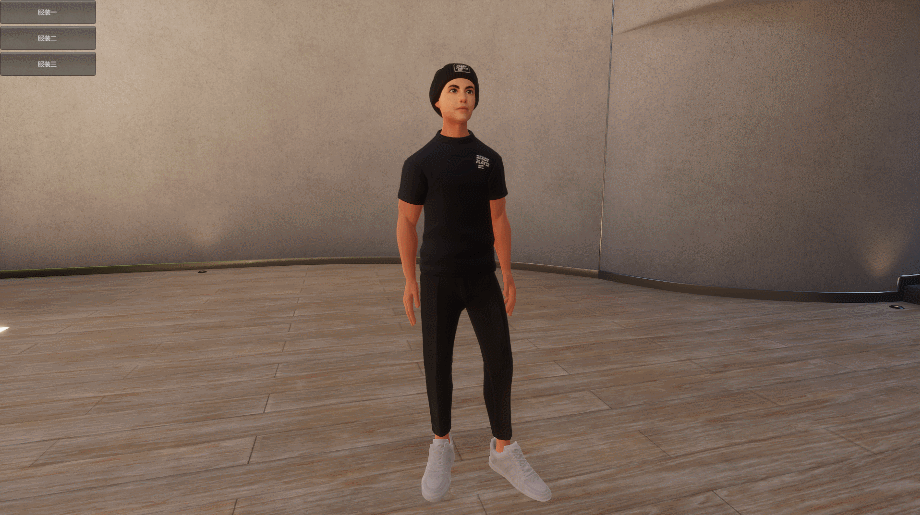
随着
元宇宙概念的火热,数字人换装捏脸的实现方案逐渐受到更多关注,本篇内容主要介绍如何在Unity中实现数字人的换装系统,涉及的所有美术资源均来源于RPM(Ready Player Me),地址:Ready Player Me主页。
实现该系统涉及到的无非是老生常谈的几项内容:
- Skinned Mesh Renderer - 蒙皮网格
- Material - 材质球
- Avatar Bone - 骨架
重要点,也是核心点,就是基于Avatar数字人的同一套骨架,也就是讲当数字人进行换装时,切换的是Skinned Mesh Renderer中的Mesh网格及Material材质球,骨架是不会去改变的。
🎈 如何将RPM中编辑的Avatar导入到Unity
本专栏的第一篇内容中有介绍RPM的使用以及将Avatar导入Unity的过程,下面简要说明。
首先要下载其SDK,地址:Ready Player Me - Unity SDK,将下载的.unitypackage包导入到Unity中,可以看到菜单栏中有了Ready Player Me的选项,Avatar Loader可以将我们自定义的Avatar模型导入到Unity中:
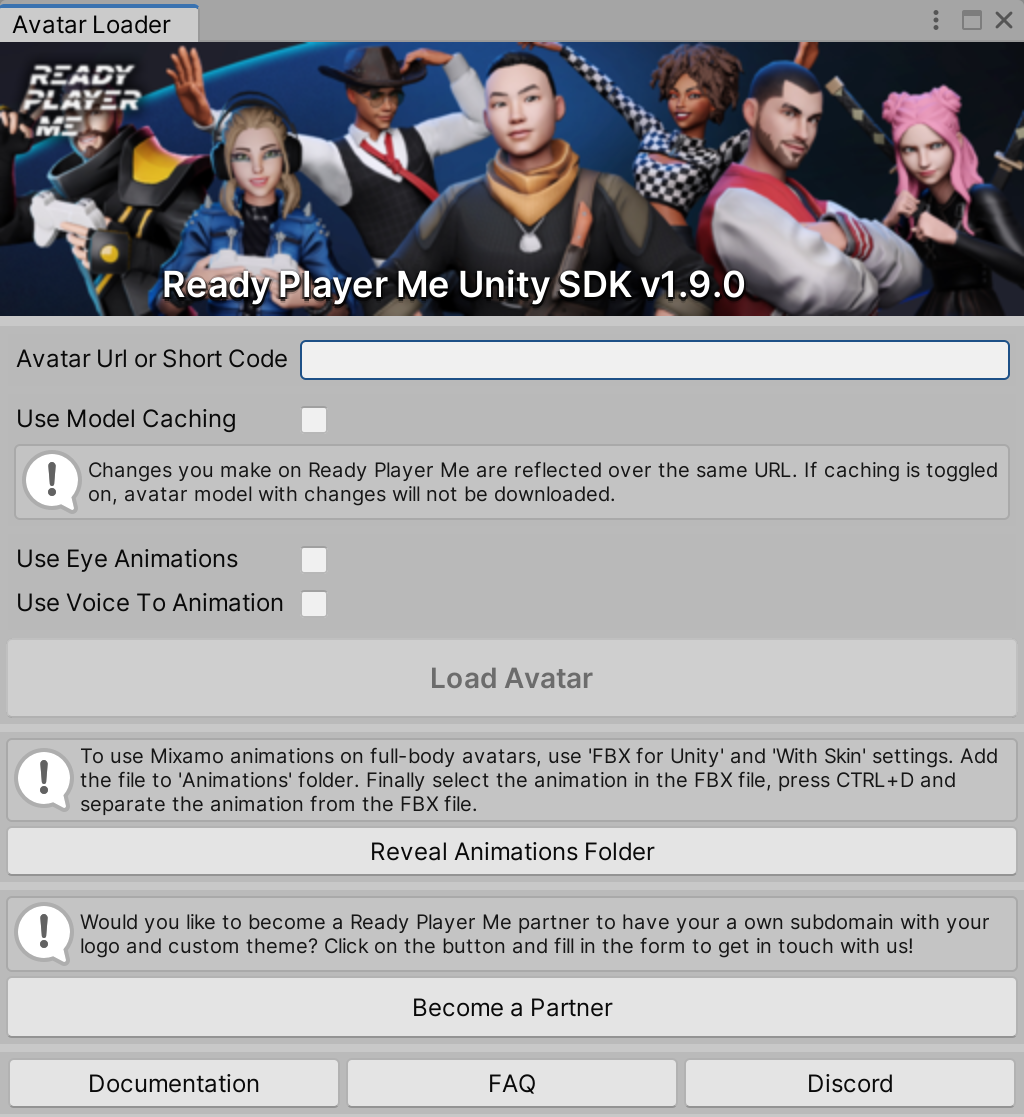
在RPM的Avatar Hub中,选择我们想要导入到Unity中的Avatar,通过Copy .glb URL复制链接。
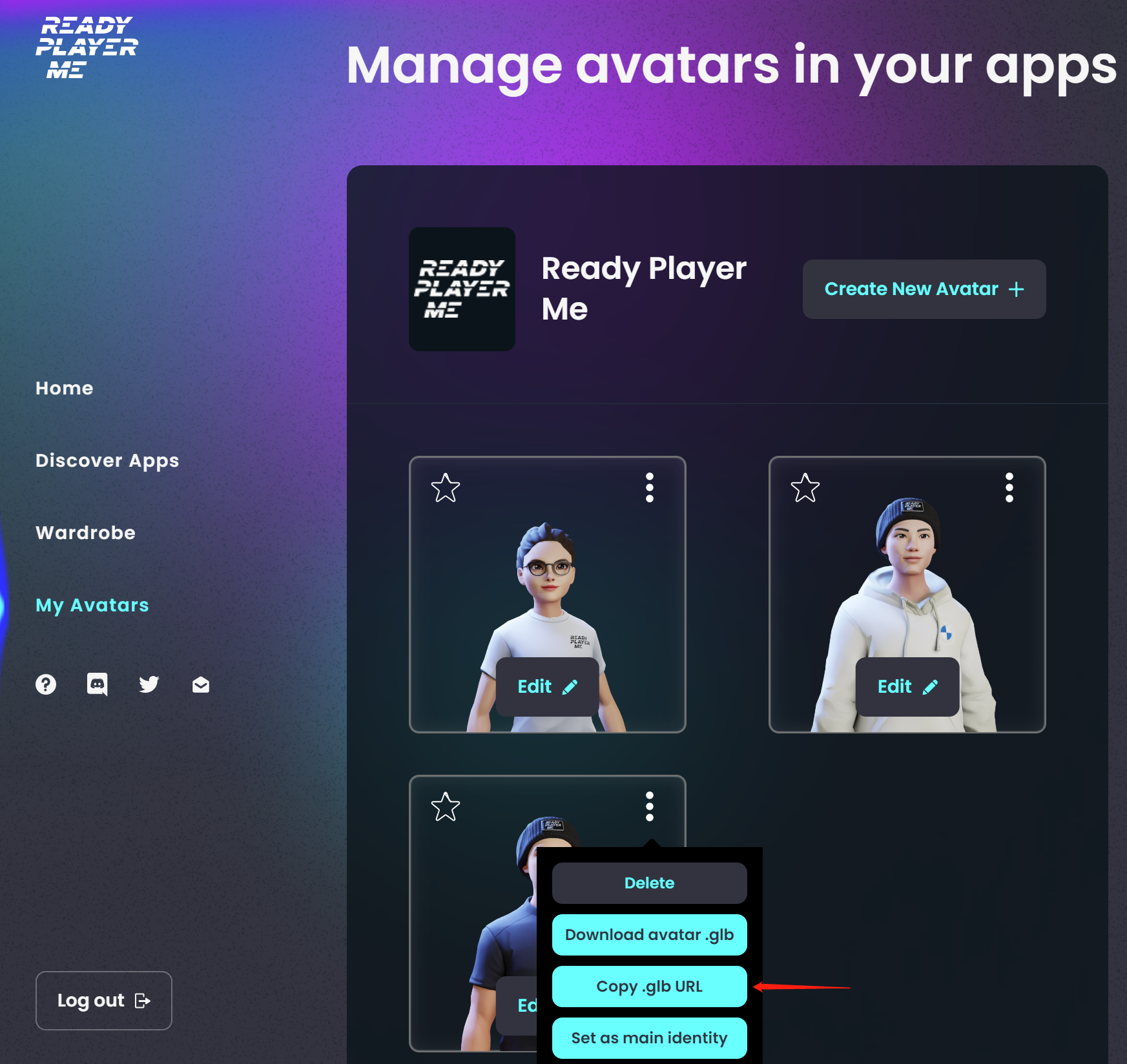
回到Unity中,将复制的链接粘贴到Avatar URL or Short Code中,点击Load Avatar
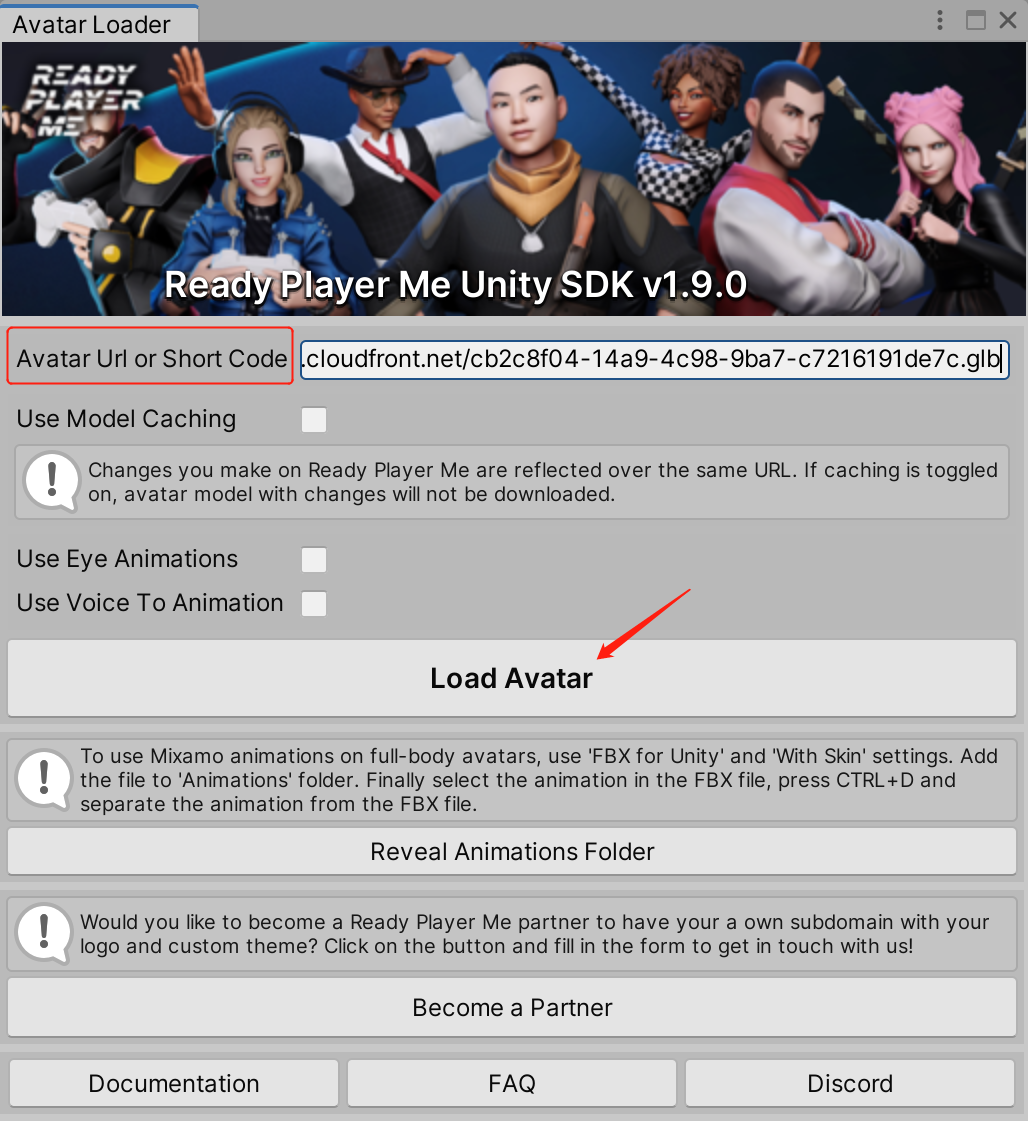
下载完成后,在Resources文件夹下可以看到下载的.glb模型文件:

Unity中常用的模型文件格式为.fbx类型,可以通过Blender软件将.glb格式文件转换为.fbx格式文件,需要注意在导出选项里,将路径模式改为复制,并选中后面的内嵌纹理,否则导入到Unity中只是一个白模,并没有材质、贴图。
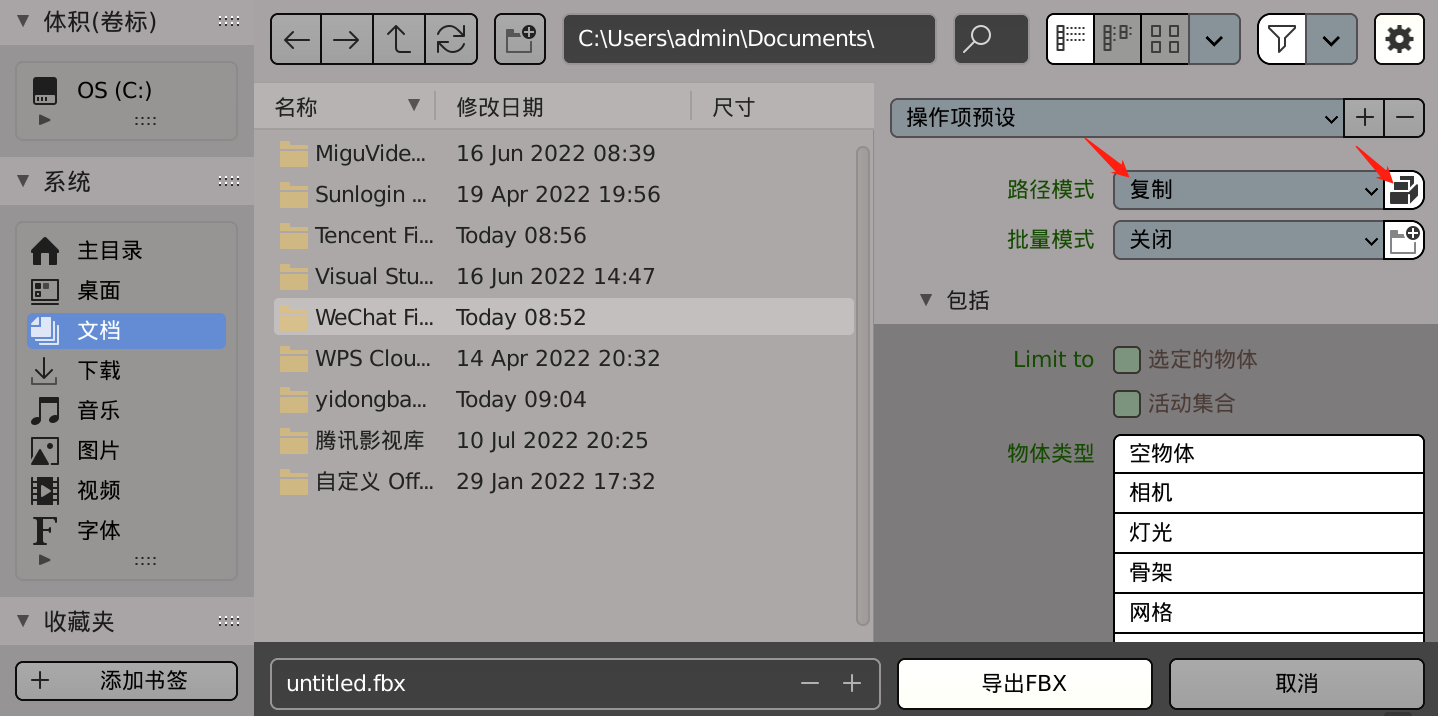
🎈 如何提取模型中的Mesh网格、Material材质、及Texture贴图
Mesh网格和Material材质的提取可以直接在Skinned Mesh Renderer组件中获取并通过实例化并调用AssetDatabase类中的CreateAsset来创建和保存资产:
// 摘要:
// Creates a new asset at path.
//
// 参数:
// asset:
// Object to use in creating the asset.
//
// path:
// Filesystem path for the new asset.
[MethodImpl(MethodImplOptions.InternalCall)]
[NativeThrows]
[PreventExecutionInState(AssetDatabasePreventExecution.kGatheringDependenciesFromSourceFile, PreventExecutionSeverity.PreventExecution_ManagedException, "Assets may not be created during gathering of import dependencies")]
public static extern void CreateAsset([NotNull("ArgumentNullException")] UnityEngine.Object asset, string path);
- asset:第一个参数为要进行保存/创建的资产;
- path:第二个参数为该资产生成的文件夹路径。
而Texture贴图资源可以通过调用AssetDatabase类中的GetDependencies方法获取材质球的依赖项文件路径:
// 摘要:
// Returns an array of all the assets that are dependencies of the asset at the
// specified pathName. Note: GetDependencies() gets the Assets that are referenced
// by other Assets. For example, a Scene could contain many GameObjects with a Material
// attached to them. In this case, GetDependencies() will return the path to the
// Material Assets, but not the GameObjects as those are not Assets on your disk.
//
// 参数:
// pathName:
// The path to the asset for which dependencies are required.
//
// recursive:
// Controls whether this method recursively checks and returns all dependencies
// including indirect dependencies (when set to true), or whether it only returns
// direct dependencies (when set to false).
//
// 返回结果:
// The paths of all assets that the input depends on.
public static string[] GetDependencies(string pathName)
{
return GetDependencies(pathName, recursive: true);
}
根据路径调用LoadAssetAtPath方法加载贴图资源:
// 摘要:
// Returns the first asset object of type type at given path assetPath.
//
// 参数:
// assetPath:
// Path of the asset to load.
//
// type:
// Data type of the asset.
//
// 返回结果:
// The asset matching the parameters.
[MethodImpl(MethodImplOptions.InternalCall)]
[PreventExecutionInState(AssetDatabasePreventExecution.kGatheringDependenciesFromSourceFile, PreventExecutionSeverity.PreventExecution_ManagedException, "Assets may not be loaded while dependencies are being gathered, as these assets may not have been imported yet.")]
[PreventExecutionInState(AssetDatabasePreventExecution.kDomainBackup, PreventExecutionSeverity.PreventExecution_ManagedException, "Assets may not be loaded while domain backup is running, as this will change the underlying state.")]
[NativeThrows]
[TypeInferenceRule(TypeInferenceRules.TypeReferencedBySecondArgument)]
public static extern UnityEngine.Object LoadAssetAtPath(string assetPath, Type type);
public static T LoadAssetAtPath<T>(string assetPath) where T : UnityEngine.Object;
本篇内容中提取Avatar数字人相关资产的工作流如下:
- fbx导入到Unity后,在
Import Settings导入设置中将Material Location类型改为Use External Materials(Legacy),应用后编辑器会在该fbx文件所在目录下生成相应的材质和贴图资源文件夹:
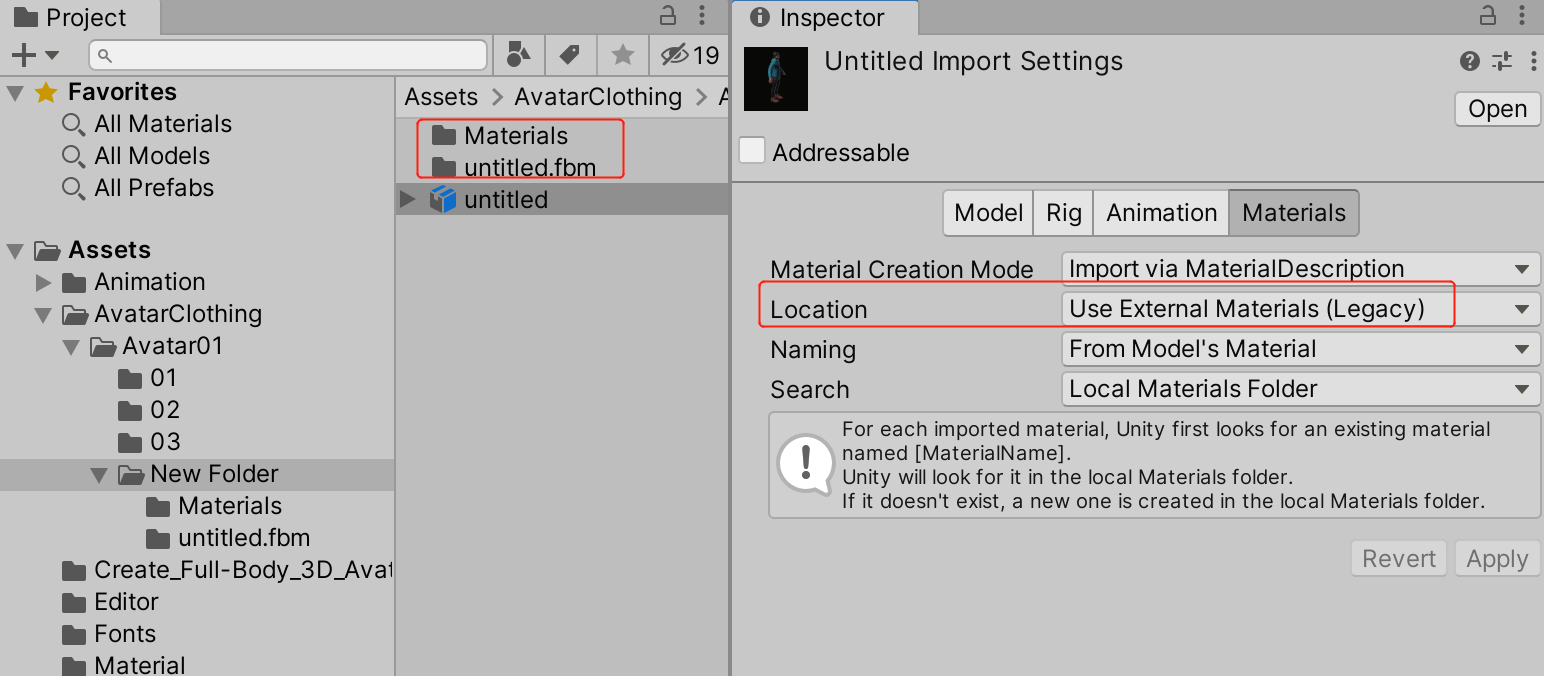
- 将所有
法线贴图的Texture Type改为Normal map,并检查法线贴图是否用在相应材质球上:

- 调用自定义的编辑器方法,提取资产:
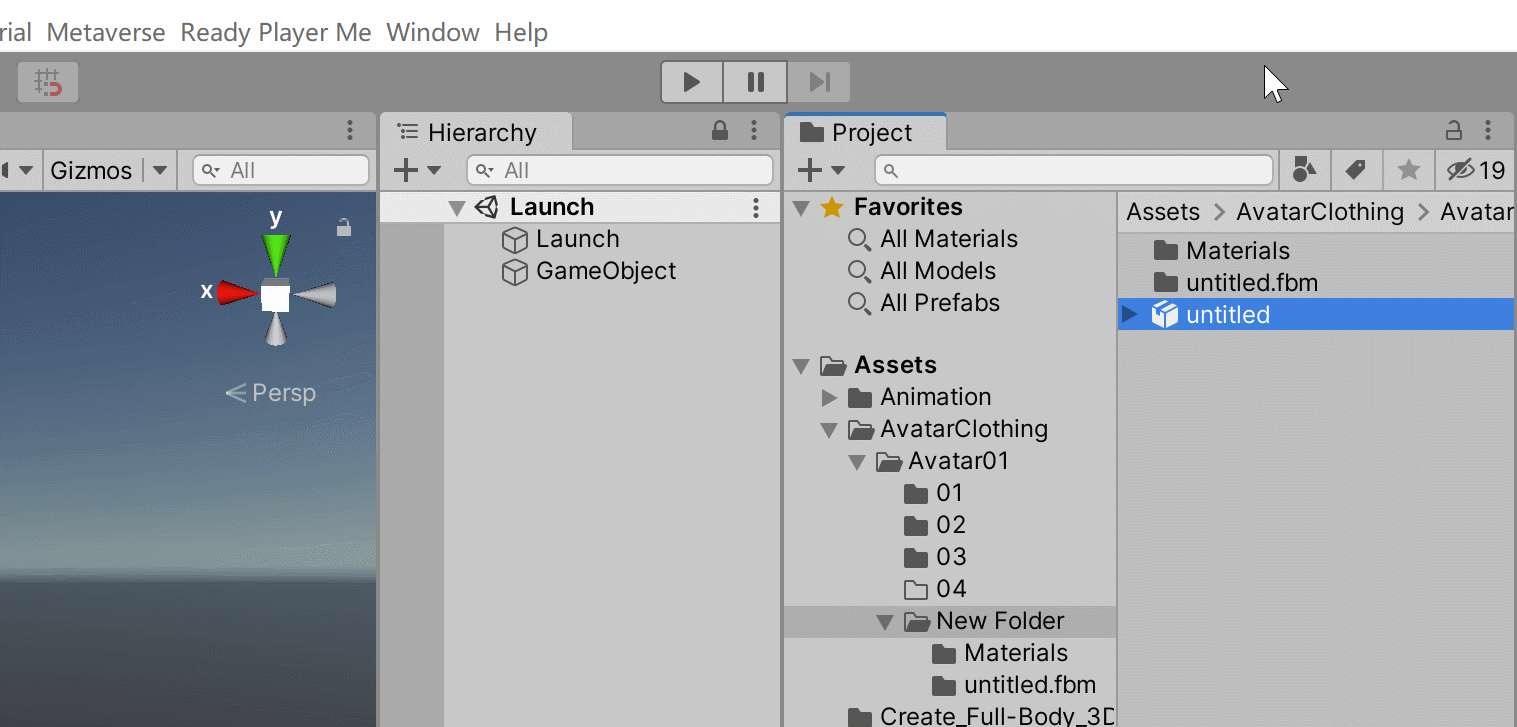
该方法可以提取Avatar的头部、身体、上衣、裤子及鞋子的相关资产,代码如下:
using UnityEngine;
using UnityEditor;
namespace Metaverse
{
/// <summary>
/// 用于提取ReadyPlayerMe的Avatar服装资源
/// </summary>
public class RPMAvatarClothingCollecter
{
[MenuItem("Metaverse/Ready Player Me/Avatar Clothing Collect")]
public static void Execute()
{
//如果未选中任何物体
if (Selection.activeGameObject == null) return;
//弹出窗口 选择资源提取的路径
string collectPath = EditorUtility.OpenFolderPanel("选择路径", Application.dataPath, null);
//如果路径为空或无效 返回
if (string.IsNullOrEmpty(collectPath)) return;
//AssetDatabase路径
collectPath = collectPath.Replace(Application.dataPath, "Assets");
if (!AssetDatabase.IsValidFolder(collectPath)) return;
//头部
Transform head = Selection.activeGameObject.transform.Find("Wolf3D_Head");
if (head != null) Collect(collectPath, head.GetComponent<SkinnedMeshRenderer>(), "head");
//身体
Transform body = Selection.activeGameObject.transform.Find("Wolf3D_Body");
if (head != null) Collect(collectPath, body.GetComponent<SkinnedMeshRenderer>(), "body");
//上衣
Transform top = Selection.activeGameObject.transform.Find("Wolf3D_Outfit_Top");
if (top != null) Collect(collectPath, top.GetComponent<SkinnedMeshRenderer>(), "top");
//裤子
Transform bottom = Selection.activeGameObject.transform.Find("Wolf3D_Outfit_Bottom");
if (bottom != null) Collect(collectPath, bottom.GetComponent<SkinnedMeshRenderer>(), "bottom");
//鞋子
Transform footwear = Selection.activeGameObject.transform.Find("Wolf3D_Outfit_Footwear");
if (footwear != null) Collect(collectPath, footwear.GetComponent<SkinnedMeshRenderer>(), "footwear");
//刷新
AssetDatabase.Refresh();
}
public static void Collect(string path, SkinnedMeshRenderer smr, string suffix)
{
//创建Mesh网格资产
AssetDatabase.CreateAsset(Object.Instantiate(smr.sharedMesh), string.Format("{0}/mesh_{1}.asset", path, suffix));
//创建Material材质球资产
Material material = Object.Instantiate(smr.sharedMaterial);
AssetDatabase.CreateAsset(material, string.Format("{0}/mat_{1}.asset", path, suffix));
//获取材质球的依赖项路径
string[] paths = AssetDatabase.GetDependencies(AssetDatabase.GetAssetPath(material));
//遍历依赖项路径
for (int i = 0;i < paths.Length; i++)
{
//AssetDatabase路径
string p = paths[i].Replace(Application.dataPath, "Assets");
//根据路径加载Texture贴图资源
Texture tex = AssetDatabase.LoadAssetAtPath<Texture>(p);
if (tex == null) continue;
TextureImporter textureImporter = AssetImporter.GetAtPath(p) as TextureImporter;
//主贴图
if (textureImporter.textureType == TextureImporterType.Default)
{
AssetDatabase.MoveAsset(p, string.Format("{0}/tex_{1}_d.jpg", path, suffix));
}
//法线贴图
if (textureImporter.textureType == TextureImporterType.NormalMap)
{
AssetDatabase.MoveAsset(p, string.Format("{0}/tex_{1}_n.jpg", path, suffix));
}
}
}
}
}
🎈 如何提取RPM网页中的图片资源
提取网页中的图片资源可以使用
ImageAssistant图片助手,一款Chrome浏览器中用于嗅探、分析网页图片、图片筛选、下载等功能的扩展程序,当然也可以在Edge浏览器中去使用,地址:Image Assistant
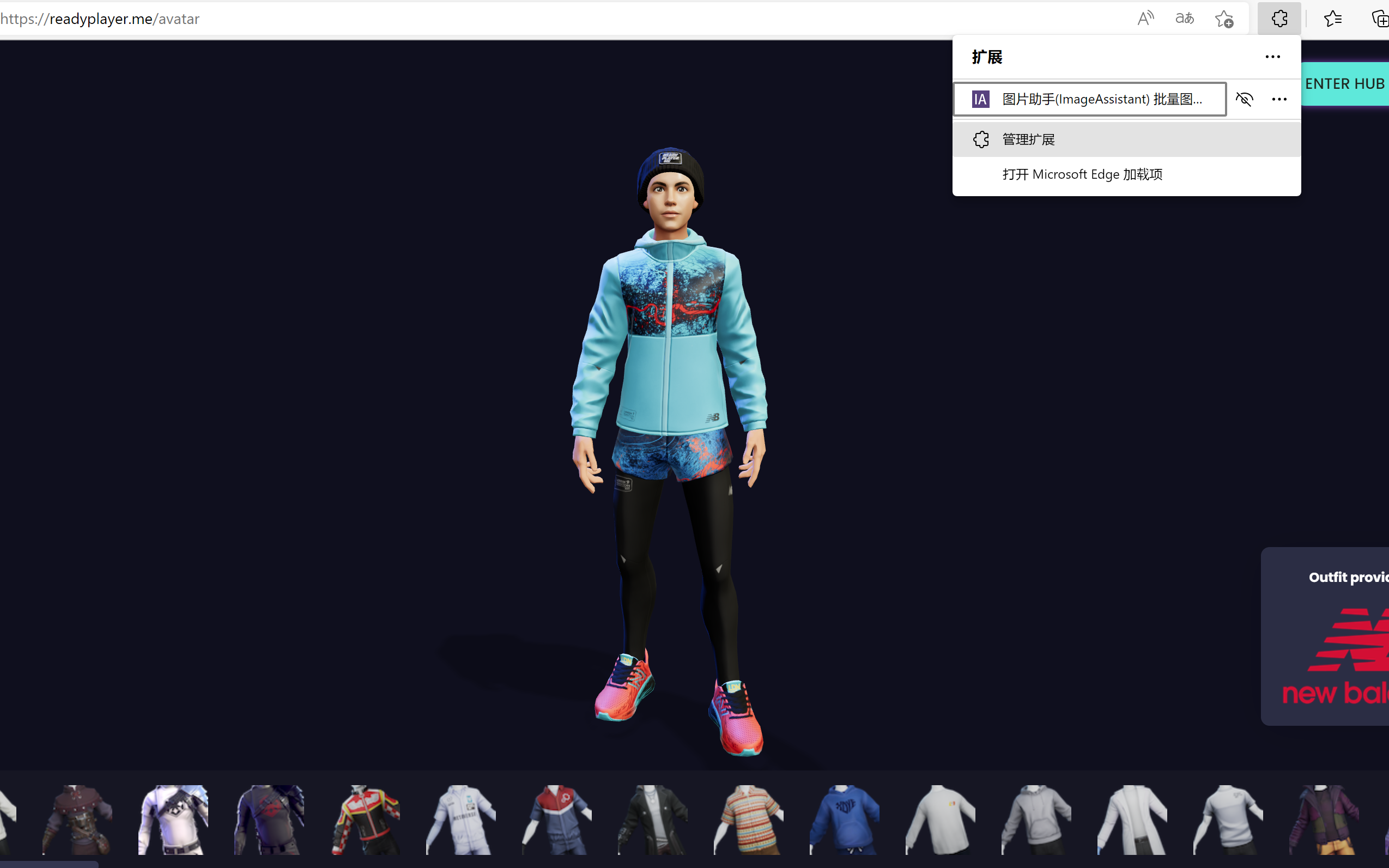
选中想要下载的图片资源并开始下载:
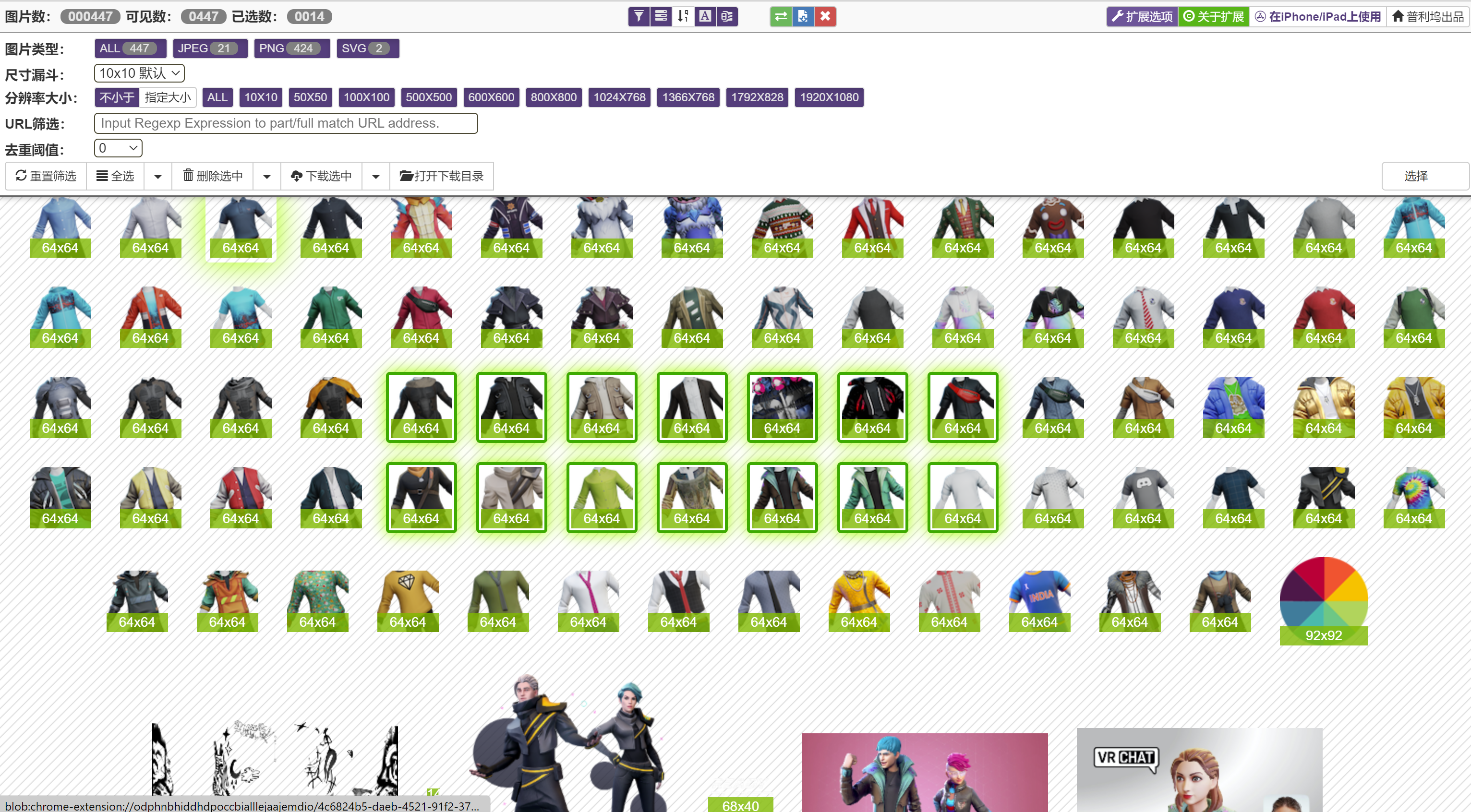
🎈 资源配置
正常开发工作中,建议构建出不同服装资源的AB(AssetsBundle)包,通过加载AB包来实现各种服装的切换,本篇内容中通过Scriptable Object配置各种服装资源来实现Demo,首先编写外观数据类:
using System;
using UnityEngine;
namespace Metaverse
{
/// <summary>
/// Avatar外观数据
/// </summary>
[Serializable]
public class AvatarOutlookData
{
/// <summary>
/// 头部网格
/// </summary>
public Mesh headMesh;
/// <summary>
/// 头部材质
/// </summary>
public Material headMaterial;
/// <summary>
/// 身体网格
/// </summary>
public Mesh bodyMesh;
/// <summary>
/// 身体材质
/// </summary>
public Material bodyMaterial;
/// <summary>
/// 上衣网格
/// </summary>
public Mesh topMesh;
/// <summary>
/// 上衣材质
/// </summary>
public Material topMaterial;
/// <summary>
/// 裤子网格
/// </summary>
public Mesh bottomMesh;
/// <summary>
/// 裤子材质
/// </summary>
public Material bottomMaterial;
/// <summary>
/// 鞋子网格
/// </summary>
public Mesh footwearMesh;
/// <summary>
/// 鞋子材质
/// </summary>
public Material footwearMaterial;
/// <summary>
/// 缩略图
/// </summary>
public Sprite thumb;
}
}
编写配置类如下,实现后创建一个新的配置表并配置数据:
using UnityEngine;
namespace Metaverse
{
/// <summary>
/// Avatar服装配置
/// </summary>
[CreateAssetMenu(menuName = "Metaverse/Avatar Clothing Config")]
public class AvatarClothingConfig : ScriptableObject
{
public AvatarOutlookData[] data = new AvatarOutlookData[0];
}
}
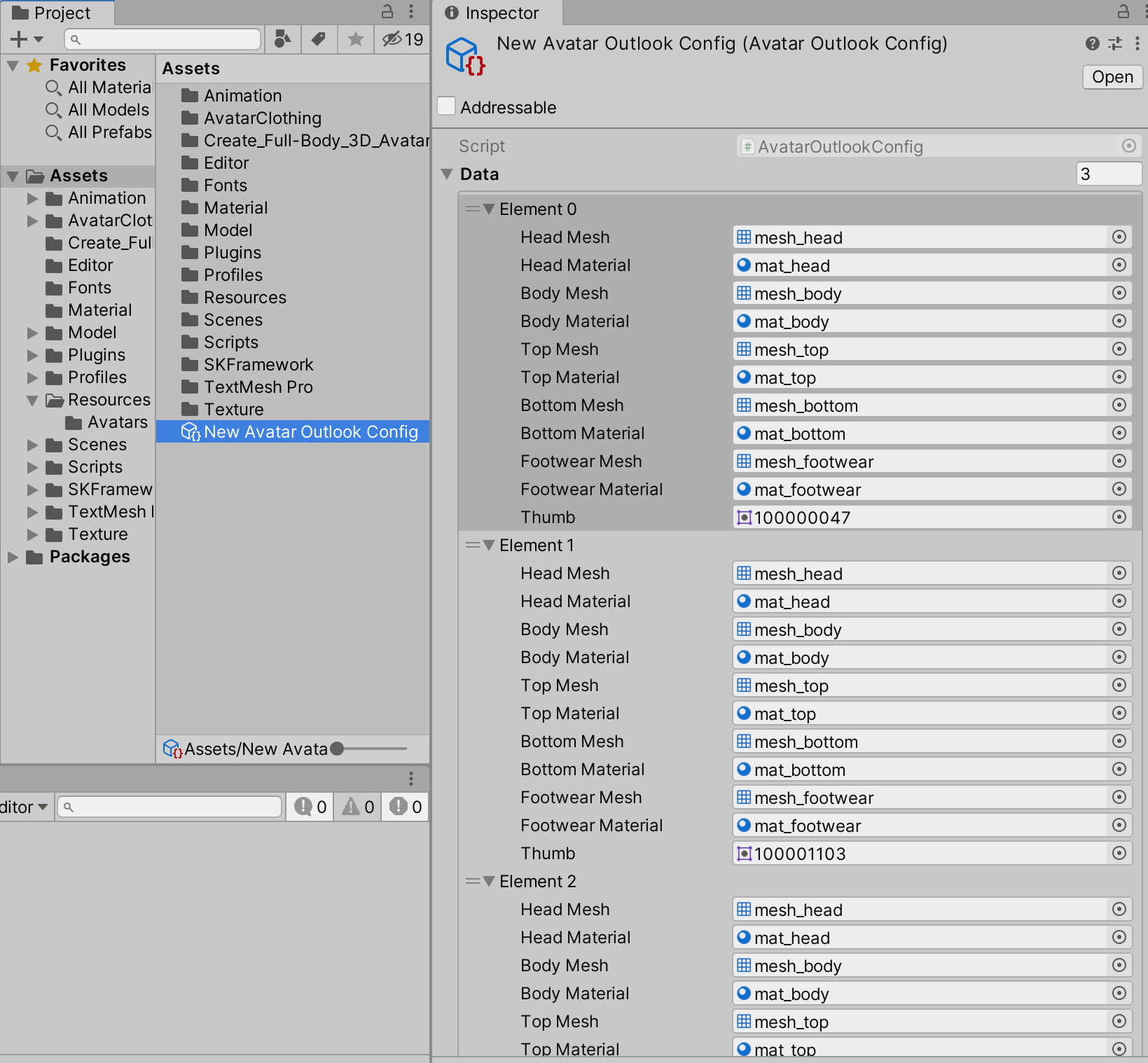
测试脚本如下:
using UnityEngine;
public class Example : MonoBehaviour
{
[SerializeField] private SkinnedMeshRenderer head;
[SerializeField] private SkinnedMeshRenderer body;
[SerializeField] private SkinnedMeshRenderer top;
[SerializeField] private SkinnedMeshRenderer bottom;
[SerializeField] private SkinnedMeshRenderer footwear;
[SerializeField] private Metaverse.AvatarOutlookConfig config;
private void OnGUI()
{
if (GUILayout.Button("服装一", GUILayout.Width(200f), GUILayout.Height(50f))) Apply(0);
if (GUILayout.Button("服装二", GUILayout.Width(200f), GUILayout.Height(50f))) Apply(1);
if (GUILayout.Button("服装三", GUILayout.Width(200f), GUILayout.Height(50f))) Apply(2);
}
private void Apply(int index)
{
head.sharedMesh = config.data[index].headMesh;
head.sharedMaterial = config.data[index].headMaterial;
body.sharedMesh = config.data[index].bodyMesh;
body.sharedMaterial = config.data[index].bodyMaterial;
top.sharedMesh = config.data[index].topMesh;
top.sharedMaterial = config.data[index].topMaterial;
bottom.sharedMesh = config.data[index].bottomMesh;
bottom.sharedMaterial = config.data[index].bottomMaterial;
footwear.sharedMesh = config.data[index].footwearMesh;
footwear.sharedMaterial = config.data[index].footwearMaterial;
}
}
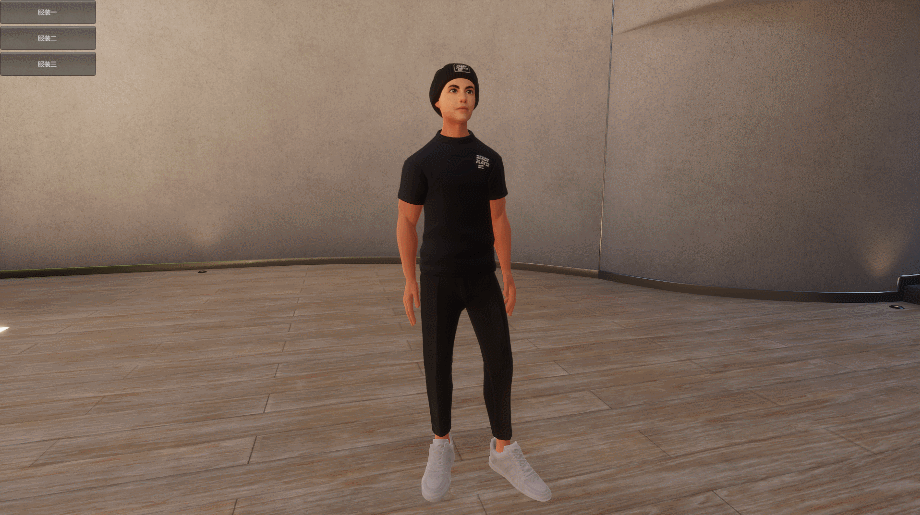
- 点赞
- 收藏
- 关注作者

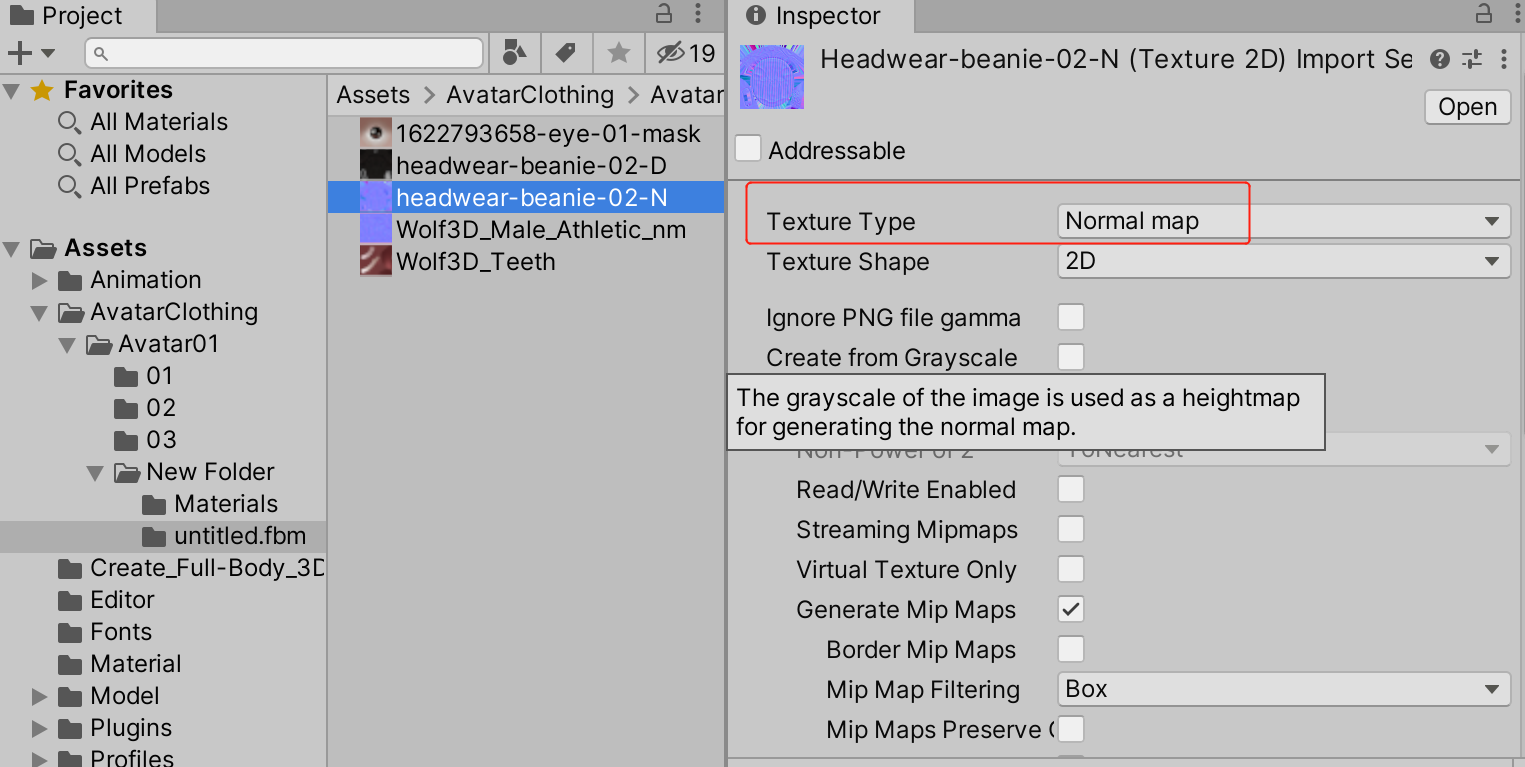

评论(0)